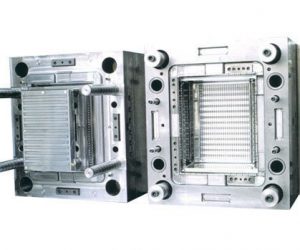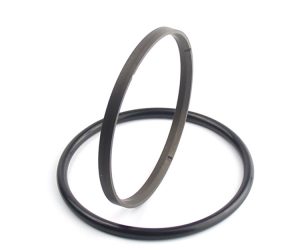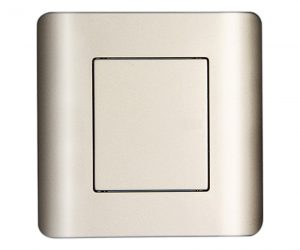1. Definition of Rapid Prototyping
Rapid prototyping, often abbreviated as RP, is a revolutionary process that enables the quick creation of a physical model or a prototype from a digital model. It serves as a bridge between the theoretical design in the digital realm and the tangible product in the real world. By leveraging advanced manufacturing technologies such as 3D printing, CNC (Computer Numerical Control) machining, and laser cutting, rapid prototyping allows designers and engineers to transform their ideas into three - dimensional objects in a relatively short period.
2. The Core Process of Rapid Prototyping
2.1 From Digital Design to Physical Model
The journey of rapid prototyping begins with the creation of a digital design. Designers and engineers typically use Computer - Aided Design (CAD) software to bring their ideas to life in the digital realm. CAD software offers a wide range of tools that allow for the precise creation of three - dimensional models. For Yigu Technology example, in the design of a new consumer electronics product like a smartwatch, the CAD software enables the designer to define the shape, size, and details of the watch face, the curvature of the body, and the placement of buttons and sensors with high accuracy.
Once the 3D digital model is complete, it needs to be prepared for the physical prototyping stage. This involves a process called slicing. The slicing software takes the 3D model and divides it into numerous thin layers, typically ranging from 0.05 mm to 0.3 mm in thickness, depending on the desired level of detail and the capabilities of the prototyping equipment. Each layer represents a cross - section of the final physical model. The software then generates a set of instructions, usually in the form of a G - code, which contains information about how to build each layer.
2.2 Key Technologies Involved
There are several key technologies used in rapid prototyping, each with its own unique characteristics, advantages, and limitations. Here are some of the most common ones:
- Stereolithography (SLA)
- Principle: SLA is one of the earliest rapid prototyping technologies. It uses a vat of liquid photopolymer resin and a UV laser. The laser beam is focused on the surface of the resin, and as it scans across the resin according to the cross - sectional pattern of the model, the resin in the scanned areas cures and hardens. After one layer is completed, the build platform is lowered, and a new layer of resin is spread over the previously cured layer, and the process repeats.
- Applicable Materials: Mainly various types of photopolymer resins, which can have different properties such as high - strength, high - temperature resistance, or flexibility depending on the formulation.
- Advantages: High precision, capable of achieving layer thicknesses as small as 0.05 mm, resulting in smooth surface finishes, especially suitable for creating detailed and complex geometries. It also has a relatively fast build speed for small to medium - sized parts.
- Disadvantages: The equipment and materials can be expensive. The resin is sensitive to light and air, and post - processing is often required, including curing the part further in a UV oven and removing support structures, which can be time - consuming and may damage the prototype if not done carefully. Additionally, the range of available materials is more limited compared to some other technologies.
- Selective Laser Sintering (SLS)
- Principle: SLS uses a high - power laser to sinter powdered materials together. A layer of powder (such as nylon, polycarbonate, or metal powders) is spread evenly over a build platform. The laser scans the powder bed, melting and fusing the powder particles in the areas corresponding to the cross - section of the model. After each layer is sintered, a new layer of powder is spread, and the process continues.
- Applicable Materials: A wide range of powdered materials, including polymers, metals, and ceramics. This makes it suitable for creating functional prototypes and parts that require high - strength or heat - resistant properties.
- Advantages: No support structures are needed during the building process since the unsintered powder supports the overhanging parts. It can produce parts with good mechanical properties and is suitable for a variety of applications, from product design to aerospace components. The material utilization rate is high as the unsintered powder can be reused.
- Disadvantages: The surface finish of the parts can be relatively rough due to the nature of the powdered material. The sintering process can be time - consuming, especially for large parts, as the powder needs to be pre - heated before sintering, and the part may need to be cooled down slowly after printing to prevent warping. The equipment is also costly, and the sintering process may produce harmful fumes that require proper ventilation.
- Fused Deposition Modeling (FDM)
- Principle: As described earlier, FDM works by melting a thermoplastic filament and extruding it through a nozzle to build the model layer by layer. The filament is fed from a spool into a heated extruder, and the nozzle moves in the X - Y plane to deposit the melted material according to the layer pattern, while the build platform moves in the Z - direction for each new layer.
- Applicable Materials: Commonly used materials include ABS, PLA, PETG, and nylon. These materials are relatively easy to obtain and are available in a variety of colors.
- Advantages: The equipment is generally more affordable compared to SLA and SLS, making it accessible to small businesses, hobbyists, and educational institutions. It is easy to use and has a wide range of available materials, some of which are biodegradable like PLA. The process is relatively clean, and it allows for quick iterations of the design.
- Disadvantages: The precision is lower compared to SLA, with typical layer thicknesses starting from around 0.1 mm. The surface finish may show visible layer lines, and the parts may have lower mechanical strength in the Z - direction due to the way the layers are stacked. It may also require support structures for overhanging parts, which need to be removed after printing and can sometimes leave marks on the prototype.
The following Yigu Technology table summarizes the key differences among these three technologies:
| Technology | Principle | Applicable Materials | Advantages | Disadvantages |
| SLA | UV laser cures liquid photopolymer resin layer by layer | Photopolymer resins | High precision, smooth surface, fast for small - medium parts | Expensive equipment and materials, sensitive resin, post - processing required |
| SLS | Laser sinters powdered materials | Polymers, metals, ceramics | No support needed, high material utilization, wide range of materials, good mechanical properties | Rough surface, time - consuming, costly equipment, fumes |
| FDM | Extrudes melted thermoplastic filament | ABS, PLA, PETG, nylon | Affordable equipment, easy to use, wide material availability, clean process | Lower precision, visible layer lines, lower Z - direction strength, support structures may be needed |
4. Applications of Rapid Prototyping in Different Industries
4.1 Automotive Industry
In the automotive industry, rapid prototyping has become an indispensable tool in the product development cycle. When designing a new car model, one of the initial steps is to create a physical prototype of the exterior body. Using 3D scanning and rapid prototyping technologies, automotive designers can quickly transform their digital sketches into tangible models. For Yigu Technology example, a concept car like the Volkswagen ID. Buzz, which combines modern electric vehicle technology with a retro design, was likely developed with the help of rapid prototyping. The designers could have used SLA or FDM 3D printing to create a scale - model of the vehicle's body, allowing them to assess the aesthetics, proportions, and overall design concept from different angles. This early - stage physical model can be refined based on feedback from design reviews, reducing the risk of costly design changes later in the production process.
Another crucial application is in the testing of automotive components. Engine parts, such as cylinder heads and intake manifolds, require precise engineering to ensure optimal performance. Rapid prototyping using SLS technology can produce functional prototypes of these parts using heat - resistant materials like metal powders. A study by Ford Motor Company found that by using rapid prototyping for engine component development, they were able to reduce the development time of a new engine by 30%. These prototypes can be tested for flow characteristics, heat dissipation, and mechanical stress in a real - world engine environment, providing valuable data for engineers to optimize the design. For instance, a prototype intake manifold can be tested on an engine dynamometer to measure the air - flow rate and pressure distribution, helping engineers to fine - tune the design for better engine efficiency.
4.2 Aerospace Industry
The aerospace industry, with its high - stakes requirements for safety, performance, and lightweight design, heavily relies on rapid prototyping. In the manufacturing of complex aerospace components, such as turbine blades for jet engines, rapid prototyping offers a solution to create parts with intricate internal cooling channels and aerodynamic shapes. Selective Laser Melting (SLM), a form of SLS technology, is often used to build these parts layer by layer from metal powders, typically nickel - based superalloys. These materials are chosen for their high - temperature resistance and mechanical strength, which are crucial for the operation of jet engines.
Aerospace companies like Boeing use rapid prototyping to validate new aircraft designs. For Yigu Technology example, when developing a new wing design for a commercial airliner, they can create a scale - model wing using rapid prototyping techniques. This prototype can then be tested in a wind tunnel to analyze its aerodynamic performance, such as lift, drag, and stability. The data collected from these tests can be used to optimize the design, ensuring that the final product meets strict fuel - efficiency and flight - performance standards. According to Airbus, rapid prototyping has reduced the time from concept to flight - test for new aircraft components by up to 50%, allowing them to bring new and improved aircraft models to the market more quickly.
4.3 Consumer Electronics
In the fast - paced world of consumer electronics, rapid prototyping is a key enabler for innovation and quick product launches. When a company like Apple is developing a new iPhone model, rapid prototyping helps in quickly iterating on the design of the device's housing, buttons, and internal components. For the exterior design, they can use 3D printing to create multiple versions of the phone's casing, testing different materials and finishes for aesthetics and durability. This allows them to make design decisions early in the development process, such as choosing the right type of aluminum alloy for the body or the optimal texture for the back cover.
Rapid prototyping also plays a vital role in the development of small, intricate components within consumer electronics. For example, the tiny speaker modules or camera lenses in smartphones are designed and prototyped using high - precision rapid prototyping techniques. These prototypes can be tested for sound quality, image resolution, and physical fit within the device. A study by Samsung showed that by using rapid prototyping in the development of a new tablet, they were able to identify and fix design flaws in the battery - placement area, which improved the overall battery life of the product by 15%. This ability to quickly test and refine designs gives consumer electronics companies a competitive edge in the market, where new and improved products are constantly in demand.
7. Conclusion
In Yigu Technology conclusion, rapid prototyping has emerged as a game - changing technology in the fields of engineering and product development. Its significance cannot be overstated, as it has revolutionized the way products are designed, developed, and brought to market.
Rapid prototyping offers a seamless transition from the digital design realm to the physical world. By leveraging advanced technologies such as 3D printing, SLA, SLS, and FDM, it enables the quick creation of highly accurate physical models from digital blueprints. This not only allows designers and engineers to visualize their ideas in a tangible form but also provides a platform for in - depth testing and evaluation.
The advantages of rapid prototyping are manifold. It significantly accelerates the time - to - market for products, giving companies a competitive edge in the fast - paced business environment. For example, startups can quickly iterate on their product designs, showcase functional prototypes to investors, and secure funding more rapidly. It also offers cost - effective design exploration, as multiple design concepts can be tested without the need for expensive tooling or large - scale production. This cost - effectiveness is crucial for small and medium - sized enterprises (SMEs) with limited budgets.
Moreover, rapid prototyping enhances product quality. Early - stage physical prototypes can be subjected to various tests, such as stress testing, aerodynamic analysis, and usability testing. This helps in identifying and rectifying design flaws well before the final production stage, leading to a higher - quality end - product. Additionally, it serves as an excellent communication tool among different stakeholders, including designers, engineers, marketing teams, and customers. A physical prototype can be easily understood and interacted with, facilitating better communication and collaboration.
The applications of rapid prototyping span across multiple industries. In the automotive industry, it is used for designing and testing new car models and components, reducing development time and cost. The aerospace industry relies on it to create complex and lightweight components, ensuring the safety and performance of aircraft. In the consumer electronics sector, rapid prototyping enables the quick development of innovative products, keeping up with the ever - changing consumer demands.



